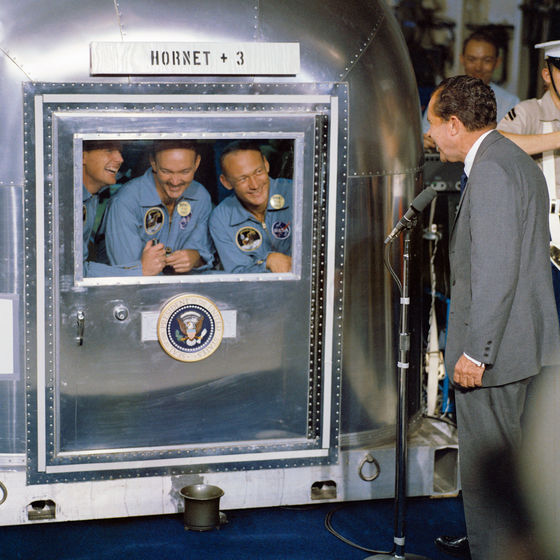Apollo 11's 'quarantine protocol' to protect Earth from contamination from moon-borne microbes was nearly pointless

by NASA
In implementing the Apollo program, the government and scientists set quarantine protocols for the spacecraft, astronauts, on-board equipment, and collected samples, because bringing back microbes from the moon could have an impact on the global environment. . However, it has been pointed out that this protocol was practically meaningless because it prioritized risks likely to occur to astronauts over risks unlikely to occur to society.
One Small Step for Man, One Giant Leap for Moon Microbes? Interpretations of Risk and the Limits of Quarantine in NASA's Apollo Program

NASA's Apollo 11 Moon Quarantine Was Mostly for Show, Study Says - The New York Times
The Apollo moon landing was real, but NASA's quarantine procedure was not |
https://www.livescience.com/space/the-moon/the-apollo-moon-landing-was-real-but-nasas-quarantine-procedure-was-not
In 1969, Apollo 11 was the first manned mission to land on the moon. At that time, neither the United States nor the Soviet Union had managed to return the probe from the moon to Earth safely, and no one knew whether there was life on the moon or not.
However, if there is some kind of organism attached to the lunar probe and comes to the earth, NASA has an isolation facility ' Lunar Receiving Laboratory (LRL)' in Houston because we do not know what kind of contamination will occur. construction. The three astronauts who boarded Apollo 11 spent three weeks at this facility after returning to Earth.
LRL constructed in about a year

by NASA
Astronaut Michael Collins sits on a chair in the LRL's crew bedroom. This is a picture in 1967 when I was receiving an explanation when the facility was completed. He doesn't know that after this, he will actually participate in the Apollo 11 mission and will be quarantined at the LRL.

by NASA
One of the astronauts who participated in the mission, Mr. Neil Armstrong, celebrated his 39th birthday during the quarantine period. There is a video of a birthday party in LRL.
Inside the LRL, botanist Charles H. Walkinshaw examines the effects of Apollo 11 lunar soil on plants.

by NASA
A well-known photo shows President Nixon visiting three astronauts in quarantine.

by NASA
However, this LRL was only a sham and the quarantine protocol was inadequate, said Georgetown University's Dagomar DeGroot.
For example, the Apollo spacecraft were not designed to prevent potential lunar contaminants from being exposed to the Earth's environment. When the capsule landed on the Pacific Ocean, the hatch was fully opened for the astronauts to escape, and the air in the module was exhausted to the atmosphere to prevent carbon dioxide poisoning of the crew when re-entering the atmosphere. rice field.
NASA originally knew that the risk of Apollo 11 astronauts returning from the moon with a plague was extremely low, but to prevent the public from panic, ``the threat of microorganisms can be contained'' to show. Mr. DeGroot points out that the LRL was created in
If Apollo 11 brought back some kind of microbes, it's difficult to say what the impact would have been on the Earth's environment, or what the dangers would have been, but the failure of that time could be the reason why Mars and other planets will be transported to Earth in the future. DeGroot said it could be a valuable lesson for missions aimed at bringing astronauts and samples to Earth.
According to NASA researchers, there is a possibility that microorganisms inhabit even under harsh conditions near the south pole of the moon. NASA is promoting the manned lunar landing mission `` Artemis plan '' since the Apollo program, and contact with this microorganism may occur.
Related Posts:







